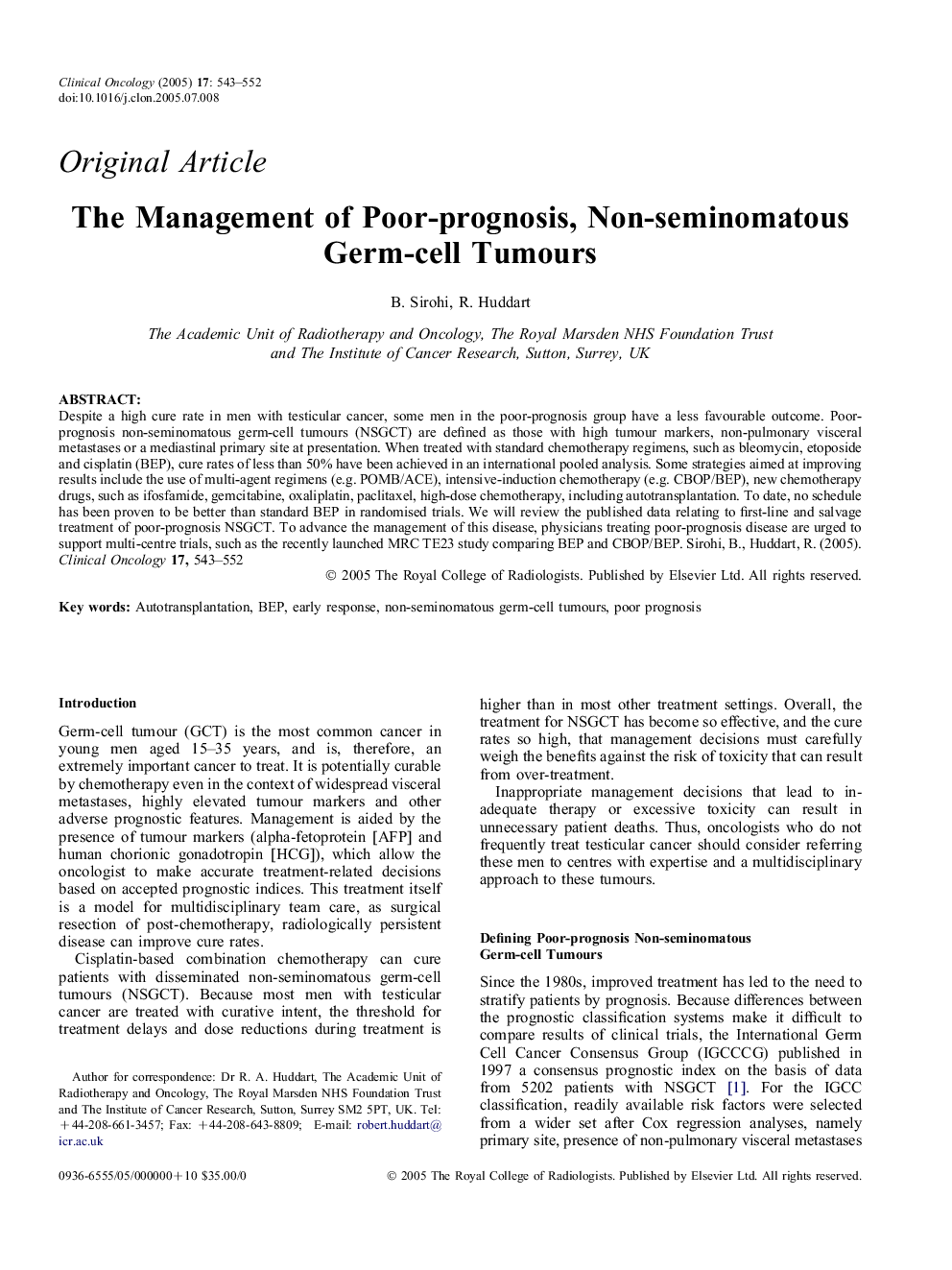| Article ID | Journal | Published Year | Pages | File Type |
|---|---|---|---|---|
| 9601491 | Clinical Oncology | 2005 | 10 Pages |
Abstract
Despite a high cure rate in men with testicular cancer, some men in the poor-prognosis group have a less favourable outcome. Poor-prognosis non-seminomatous germ-cell tumours (NSGCT) are defined as those with high tumour markers, non-pulmonary visceral metastases or a mediastinal primary site at presentation. When treated with standard chemotherapy regimens, such as bleomycin, etoposide and cisplatin (BEP), cure rates of less than 50% have been achieved in an international pooled analysis. Some strategies aimed at improving results include the use of multi-agent regimens (e.g. POMB/ACE), intensive-induction chemotherapy (e.g. CBOP/BEP), new chemotherapy drugs, such as ifosfamide, gemcitabine, oxaliplatin, paclitaxel, high-dose chemotherapy, including autotransplantation. To date, no schedule has been proven to be better than standard BEP in randomised trials. We will review the published data relating to first-line and salvage treatment of poor-prognosis NSGCT. To advance the management of this disease, physicians treating poor-prognosis disease are urged to support multi-centre trials, such as the recently launched MRC TE23 study comparing BEP and CBOP/BEP.
Related Topics
Health Sciences
Medicine and Dentistry
Oncology
Authors
B. Sirohi, R. Huddart,
